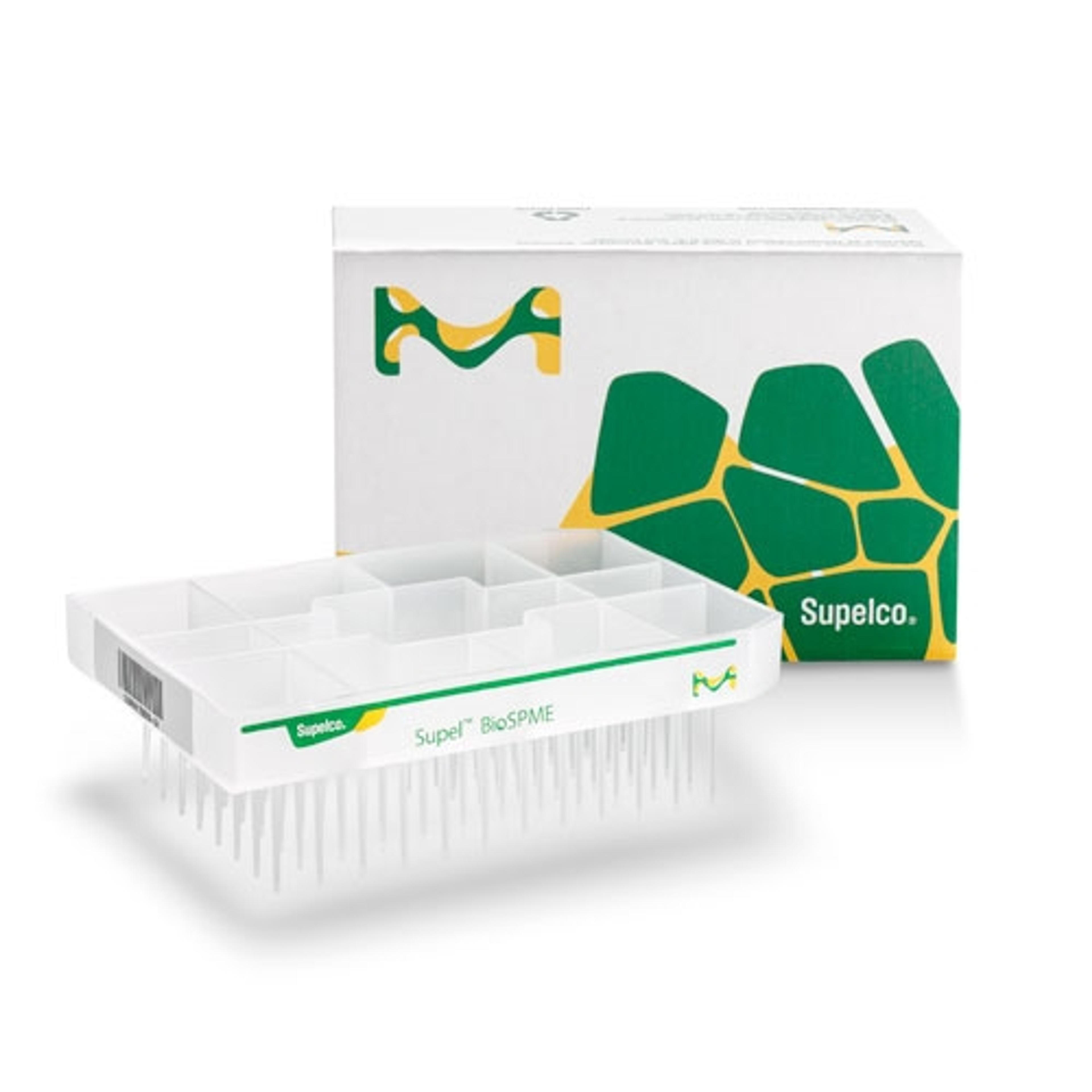BioSPME: A new tool for drug-protein binding determination
Watch this on-demand webinar to discover a new high-throughput method for measuring protein binding
30 Jun 2021

The use of solid-phase microextraction (SPME) has been widely accepted as a fast and convenient sample preparation method. It has been applied to a wide range of samples and utilizes adsorbent-containing coated devices.
In this on-demand webinar, Dr. Olga Shimelis, R&D manager, Sample Preparation, Merck KGaA, Darmstadt, Germany, demonstrates the use of a new product, the Supel™ BioSPME C18 96-Pin Devices, for in vitro measurement of protein binding properties of pharmaceutical compounds in plasma. The new sample preparation method can be performed in a high-throughput environment using standard 96-well plates and robotic equipment, achieving a workflow that is 3x faster than rapid equilibrium-based methods. The results of Supel™ BioSPME protein binding measurements were presented for analytes across the range of hydrophobicities, molecular weights, and charges.
Watch on demandRead on for highlights from the live Q&A session or register to watch the webinar at a time that suits you.
Q: Is it possible to use this device to measure non-plasma binding and tissue homogeneous binding?
OS: Yes, that would be possible. There are some studies done already on a similar type of SPME device. I think the most recent was two years ago, and they measured the total concentration of analytes, not the free concentration. In the specific example of tissue homogenate, how we calibrate the extraction has to be worked out because buffer isn’t a very good calibration solution in that instance. But I think it is possible once these method details are worked out.
I also want to mention that plasma is not the only sample, by no means. We think that it will work in cell cultures and in some lipid vesicle preparations. Any sample that has protein molecules or some larger aggregates that won't get extracted into the pins would be good candidates for these methods.
Q: Do you only have the C18 pin, or do you have other stationary phases?
OS: The C18 pin device is our first device in the series of devices to launch. For current use, we only have C18 available. Not everything will be extracted on the C18, in the HPLC for instance, the C18 is the workhorse for HPLC separations, but the polar compounds will not retain on the C18. It's the same limitation that we have now, that C18 will not extract everything.
We just spent a lot of time launching this device and so there will probably be more in the future. I showed that there is some extraction that occurs from more polar compounds. Some of these polar compounds that officially are low peak, below zero, can be extracted if they're protein-like compounds. We just need to develop a better method using C18 pin tool device.
Q: Do you recommend using specific shaker models for the extraction step during manual methods, and are there any specific requirements to the type of well plates used?
OS: You need to have efficient shaking. For plasma samples, we've used a shaker with a 1- to 2-millimeter orbital radius. These shakers come with the Hamilton system. If somebody would like to start with a manual method, we recommend the PCR top shakers because they have heater plates supplied with them, meaning there's an even heat distribution across the 96 wells.
We recommend the round bottom 96-well plates to be used for the extraction step because they provide more efficient shaking and they're made for mixing the samples. There are other kinds of plates in the market. We’ve worked with conical wells; they don't provide as efficient shaking for the extraction step. And square well plates, they're only meant for storage and not for mixing the samples.
Q: Does the synthetic material you use to make the micro extractors last longer than just one use? How many times would you normally use them, and are they biodegradable?
OS: The 96-pin devices were designed to be used once, they're single-use devices. We tried to dip them into samples multiple times and found that the surface of the device changes slightly due to exposure to different solvents during the extraction process. We don't provide any method to recondition that surface for the next extraction.
With plasma samples, most testing labs won't want to reuse anything for different samples, just to be on the safe side. Unfortunately, these devices are made from polypropylene, and they are not biodegradable.
Q: Is there a Supel™ BioSPME device tool that can be used for single samples?
OS: We only have the Supel™ BioSPME tool in the 96-pin format. If somebody would want to use single samples or triplicates, they can absolutely do that – they just don't use the full 96-well plate. They would just use a row or column of those wells or single samples on the well plate and use the 96-pin tools in that format.
Q: Do you observe any non-specific binding, and have you used this method on large molecules?
OS: We have observed non-specific binding, especially when we put the non-polar compounds into buffer solutions. There are larger molecules that can be extracted, with some limitations that I presented in the webinar.
For some of these larger molecules, one would use longer extraction time to make sure that equilibrium is reached, because if the size of the molecules is larger, they're moving slower through the solutions for extraction.
SelectScience runs 10+ webinars every month across different scientific topics, discover more of our upcoming webinars>>

